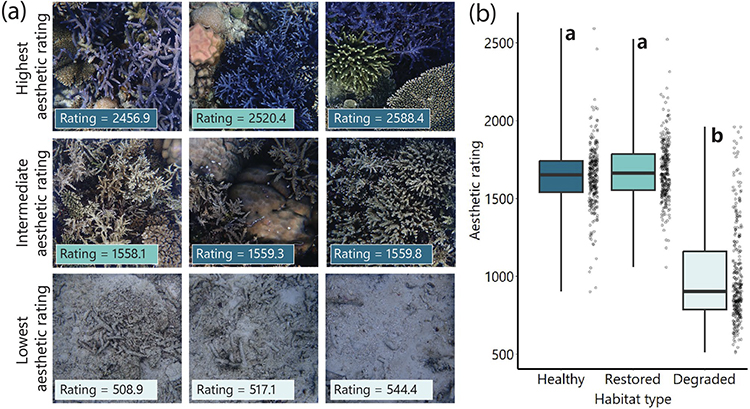BENTHIC COMMUNITIES ON RESTORED CORAL REEFS CONFER EQUIVALENT AESTHETIC VALUE TO HEALTHY REEFS.
Alisa, C.A.G., Razak, T.B., Mouquet N.*,Graham A.J, HemingsonC. R. ,Mouillot D., Damayanti, L. Prasetya M. E. , Maulana P. B., Hamka A. , Dwiyanto A., Abeng A. T., Madjid, Irwan, R. E., Hidayat A., Lakota H., Parrangan C. V., Pratama A. M. A., Hamzah, Suandar, Subhan B., Zamani N. P., Vida R. T. & Lamont, T. A. C. (2025).
Scientific Reports 15, 20790. doi.org/10.1038/s41598-025-06373-3
Key message : Coral restoration has become a common response to reef degradation, but restoration success is usually evaluated based on coral cover increases rather than ecosystem service recovery. Here, we quantify the aesthetic value of restored reefs at one of the world’s largest coral restoration projects, compared to nearby healthy and degraded reefs. Using deep learning models trained on people’s visual preferences, we estimated the aesthetic value of coral reef benthic photographs with high prediction accuracy (R2 = 0.95). Restored reefs exhibited aesthetic value that was statistically equivalent to healthy reefs and significantly higher than degraded reefs. High aesthetic value was primarily driven by colour diversity and live coral cover, which were both higher in healthy and restored reefs than degraded reefs. Taken together, these results demonstrate the recovery of aesthetic value towards a healthy state after large-scale restoration, indicating that coral restoration can support vital tourism services and well-being contributions to people.
